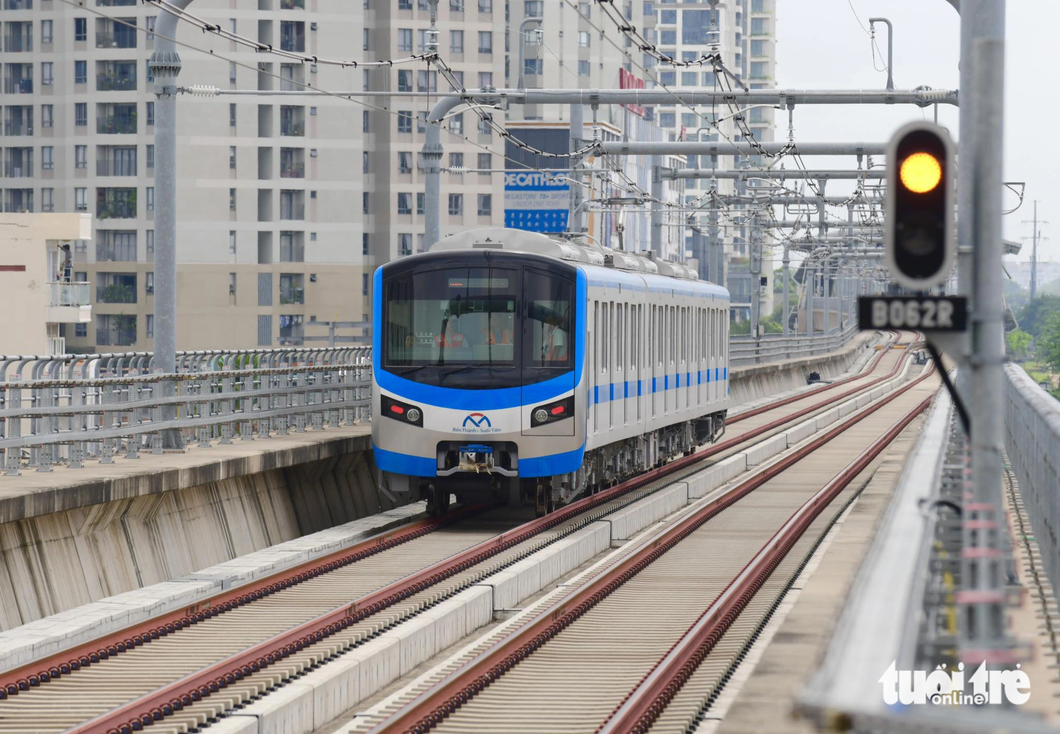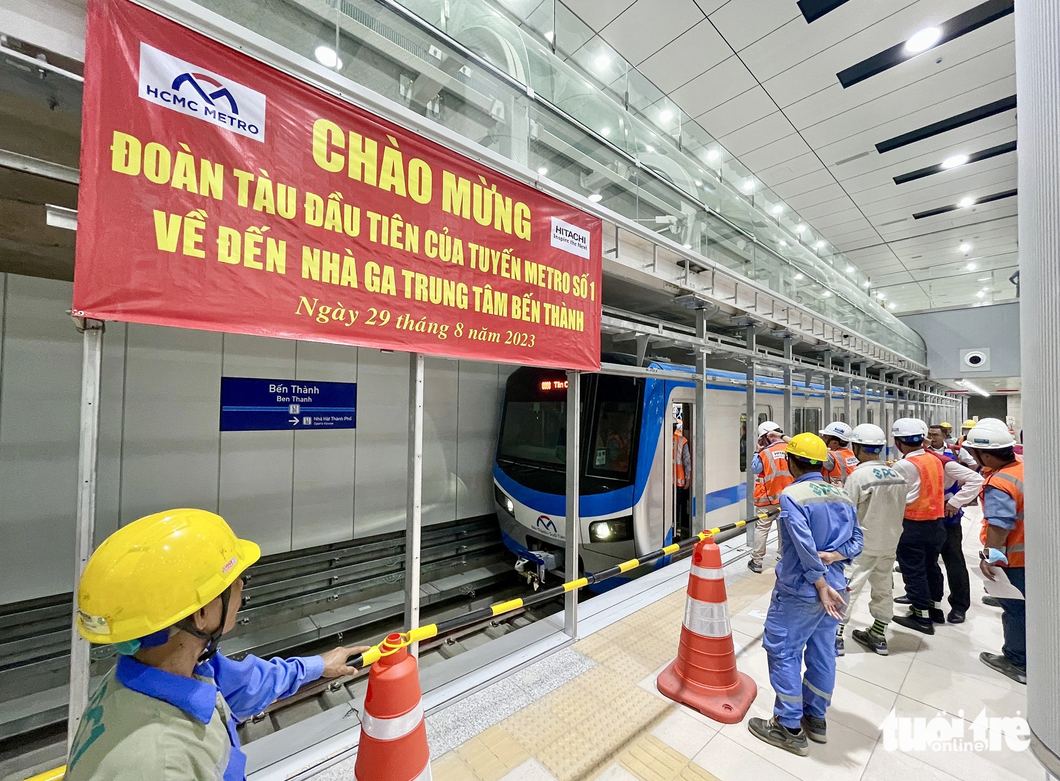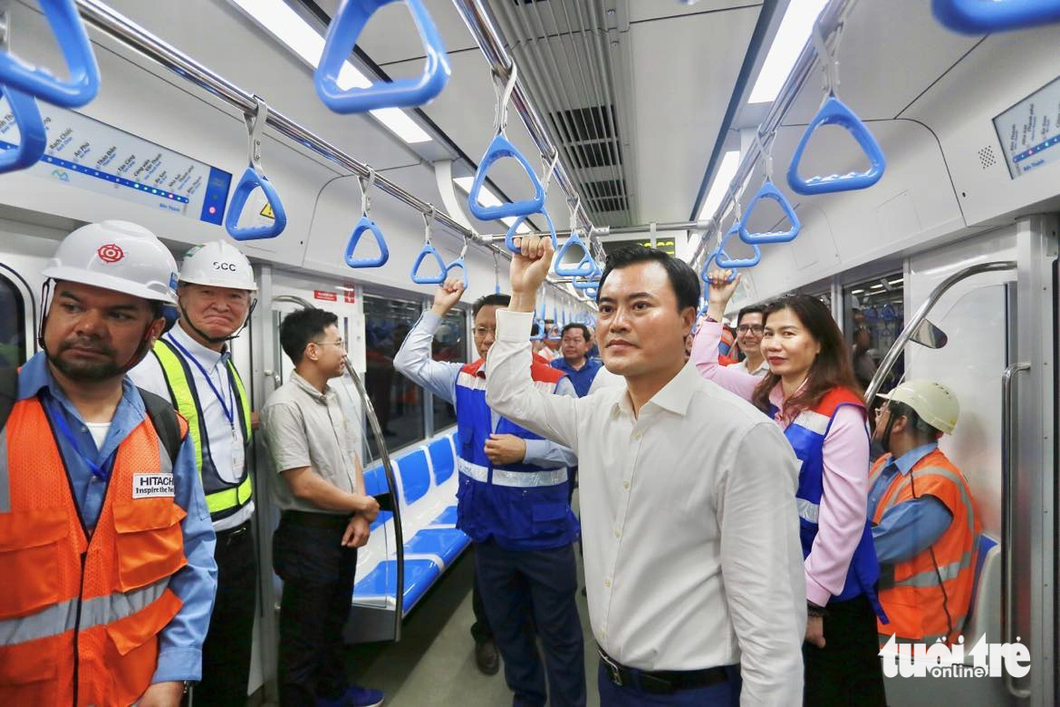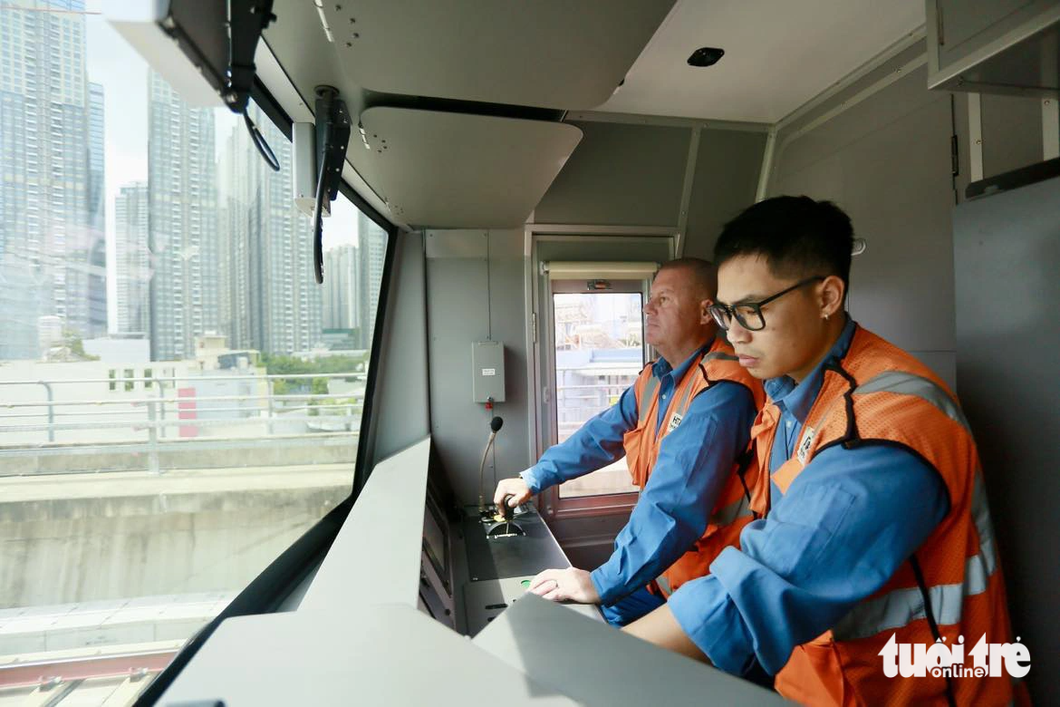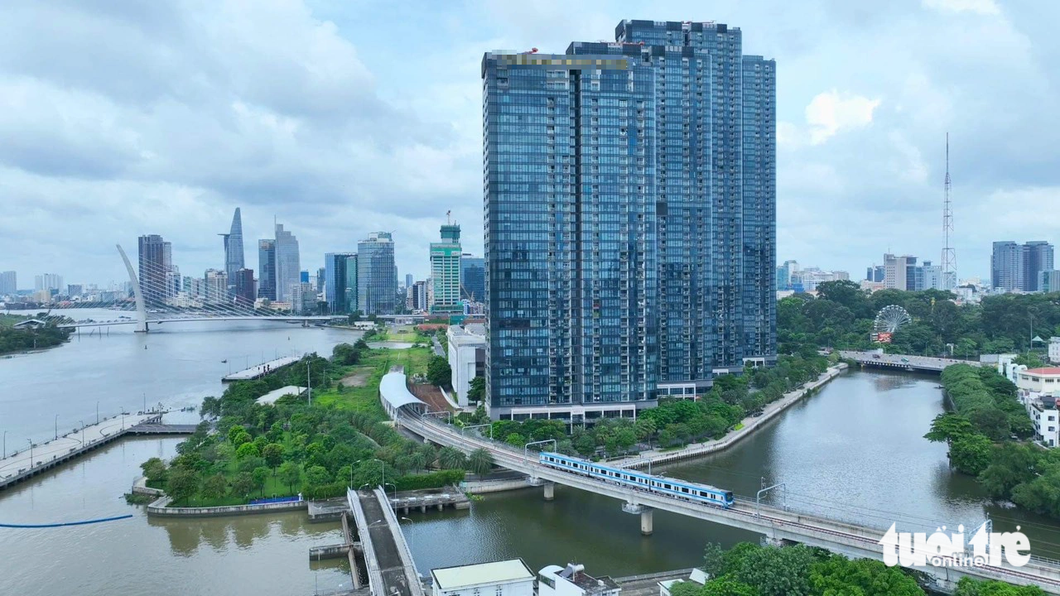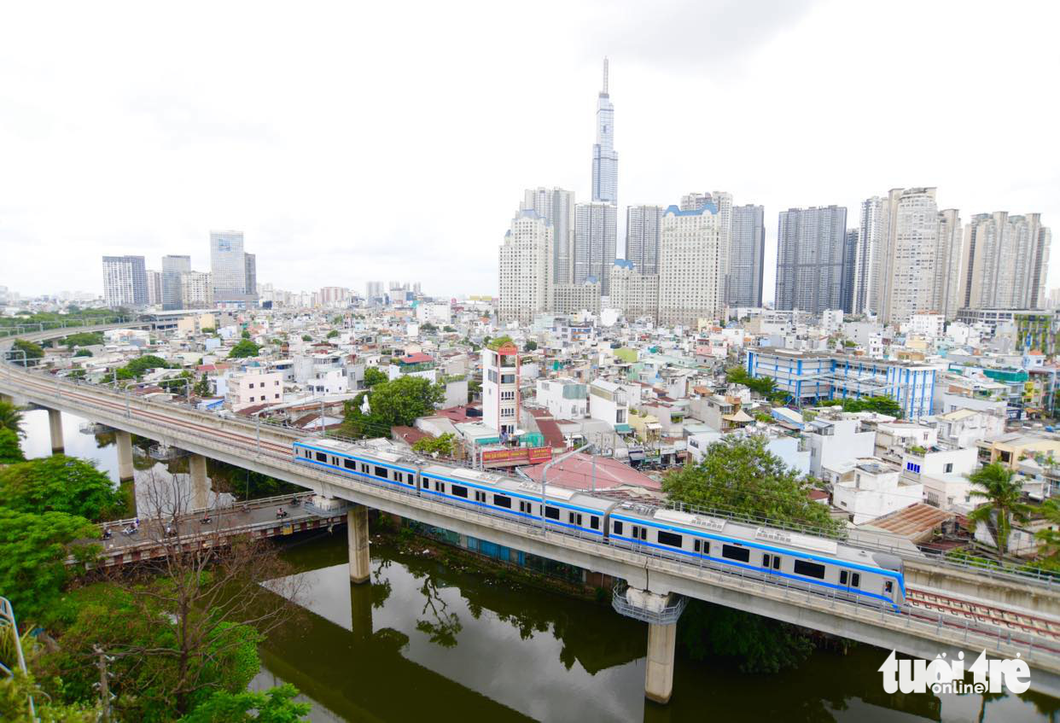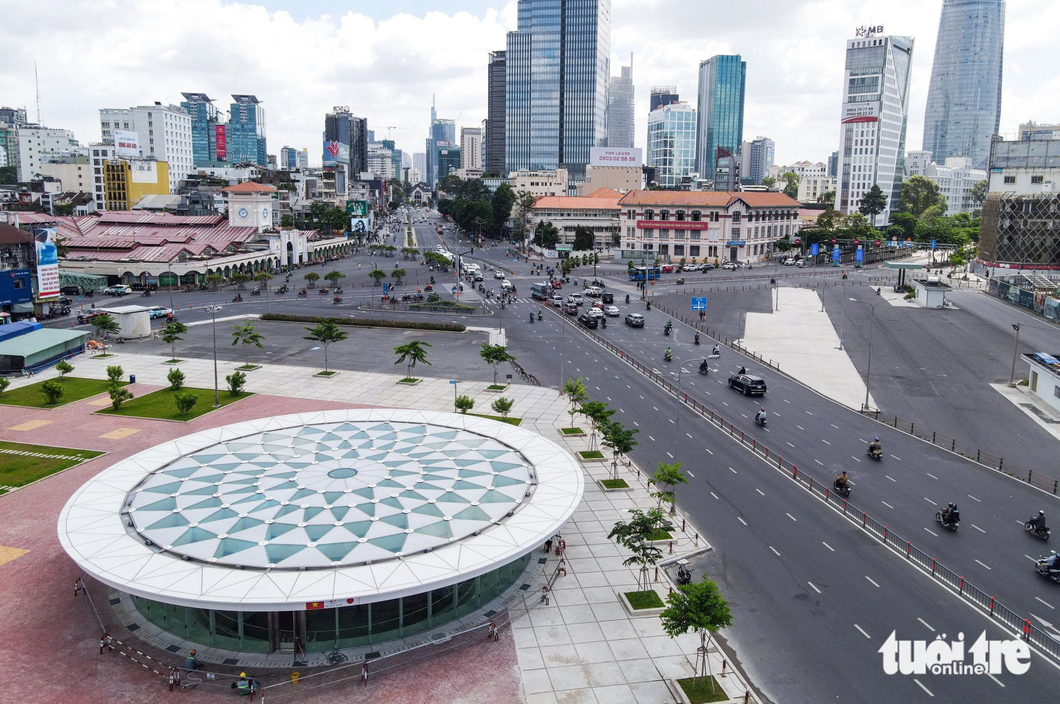Metro line No. 1 of Ho Chi Minh City embarked on a test run over the entire route for the first time on Tuesday morning with a journey of nearly 40 kilometers.
This is a milestone for the project, stretching from Ben Thanh Market in District 1 to Suoi Tien Theme Park in Thu Duc City, over 10 years after it began.
The Ho Chi Minh City Urban Railway Management Board (MAUR), the investor of the project, and Japan’s Hitachi Group, a contractor, conducted the test run with 20 passengers on board.
The contractor arranged staff and prepared solutions for urgent cases in underground stations as this is the first time metro trains have run on the underground section on a trial basis.
A train departed from the Ben Thanh Station, ran to the Suoi Tien Station, and then returned to the Ben thanh Station. On the way, it stopped at the Municipal Theater and Ba Son Stations in District 1, alongside the Tan Cang Station in Binh Thanh District.
Boarding the metro line during the test run, Diep Nguyen, residing in District 7, said, “this is an event to which not only me but also all residents in Ho Chi Minh City are looking forward. In Hanoi, we have the Cat Linh-Ha Dong metro line, and now we have the first metro line [in Ho Chi Minh City].
“I hope metro line No. 1, when being put into operation, will contribute to easing traffic congestion and increasing passengers for the New Mien Dong Coach Station [in Thu Duc City].”
|
|
| A train on the first metro line in Ho Chi Minh City is parked at the Ben Thanh Station in District 1. Photo: Chau Tuan / Tuoi Tre |
Since early this year, MAUR and contractors have prepared for the trial operation of the metro line and done the job in many phases, including static, dynamic, interface, and integration testing.
The test run on the underground section faced many difficulties as the job was done in a narrow space while contractors were at work.
The integration of lighting, fire prevention and control, as well as security systems on the underground section was also complicated.
To ensure the progress of the project, MAUR will accelerate the assessment of the system safety, and the trial operation of each section and the entire route.
|
|
| Bui Xuan Cuong (in white shirt), vice-chairman of the Ho Chi Minh City People’s Committee, joins the first test run of the first metro line on the entire route. Photo: Chau Tuan / Tuoi Tre |
The first metro line in the southern metropolis had earlier successfully embarked on three test runs on the elevated section, with the first one on December 21 last year at under 40 kilometers per hour.
Its second trial run was held on January 18 and the third one on April 26 this year on a 12.3-kilometer section of the elevated track at below 50 kilometers per hour.
The 19.7-kilometer-long metro line, which carries a price tag of VND43.7 trillion (US$1.8 billion), is now nearly 96 percent complete.
The line has 17 trains, each consisting of three cars and designed to run at up to 110 kilometers per hour above the ground and 80 kilometers per hour underground.
Each Japanese-manufactured train is 61.5 meters long and can carry 930 passengers, including 147 seating and 783 standing guests.
|
|
| Two engineers in the cabin of a train of the first metro line in Ho Chi Minh City. Photo: Chau Tuan / Tuoi Tre |
|
|
| A train on the first metro line in Ho Chi Minh City is seen on an elevated section in Binh Thanh District. Photo: Ha Vien Phuong / Tuoi tre |
|
|
| A train on the first metro line in Ho Chi Minh City runs above Ngo Tat To Street in Binh Thanh District. Photo: Quang Dinh / Tuoi Tre |
|
|
| A train on the first metro line in Ho Chi Minh City runs above Dien Bien Phu Street in Binh Thanh District. Photo: Quang Dinh / Tuoi Tre |
|
|
| A train on the first metro line in Ho Chi Minh City is seen on an elevated section parallel with the Saigon Bridge in Thu Duc City. Photo: Ha Vien Phuong / Tuoi tre |
|
|
| The Ben Thanh Station of the first metro line in Ho Chi Minh City. Photo: Chau Tuan / Tuoi Tre |
Like us on Facebook or follow us on Twitter to get the latest news about Vietnam!



